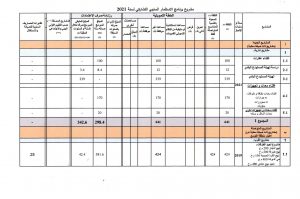
When polyneuropathy affects both sensory and motor nerves, the condition is known as sensorimotor polyneuropathy. This causes bodywide damage to nerve cells, fibers (axons), and coverings (myelin sheaths). Neuropathy can involve damage or disruption to both autonomic and somatic peripheral nerves. The treatments depend on what’s causing it and the symptoms you experience.
How Does Alcohol Impact Neurological Health?
Alcohol enters the bloodstream from the digestive system within 5 minutes of consumption, and peak absorption is seen within 30 to 90 minutes. One of the many inhibitory effects of chronic alcohol use is malnutrition. Patients who abuse alcohol tend to consume fewer calories and have poor absorption of nutrients in the gastrointestinal tract. There are also direct toxic effects of alcohol and its metabolites on neurons, affecting cellular cytoskeletons and demyelination of neurons. Among patients with chronic alcohol use disorder, neuropathy is the most common harmful sequelae.
Management and Treatment
Recently, extended release gabapentin relieved symptoms of painful polyneuropathy [120]. Valproate demonstrated varying effects in different studies of neuropathic pain, with three studies from one group reporting high efficacy [125–127] and others failing to find an effect [128, 129]. Tricyclic antidepressants (TCAs) are often the first line drugs to alleviate neuropathic pain symptoms. They have central effects on pain transmission and block the active re-uptake of norepinephrine and serotonin.

Types and symptoms of alcohol-related neurologic disease

Many theories have been raised as to the cause of alcohol-related peripheral neuropathy (ALN). While nutritional deficiencies can contribute to progression of ALN, these are not the primary cause leading to neuropathy. A diet poor in nutrients or avoiding eating can make nutritional deficiencies worse. Thus, treatment with TCAs may provide symptomatic relief in patients with alcoholic neuropathy.
Neuropathic Pain
Making fitness a part of your routine can help to address the muscle weakness that some people experience with neuropathy, as well as reduce pain. In people with diabetic neuropathy, regular exercise can also help lower high blood sugar (hyperglycemia). But be sure you talk to your healthcare team before beginning a new exercise regimen because neuropathy can affect how you respond (or don’t respond) to injury or activities that risk injury. Before one of his patients begins exercising, Williams typically assesses the patient’s feet, degree of neuropathy, blood flow to the extremities, and their risk for deformities and foot ulcers.

Apoptosis of neurones was induced by cisplatin, but pre-incubation with N-acetylcysteine completely blocked apoptosis [112]. The available data addressing the role of hepatic dysfunction is presently inconclusive. It is possible that hepatic dysfunction and alcoholic toxicity each cause neuropathy independently, and that there is frequently overlap between the two. It may also be that comorbid hepatic dysfunction is a risk factor for alcohol-related peripheral neuropathy.
Alternative medicine
Finally, one study examined the strength-duration time constant (SDTC) and rheobase in median nerves of those with alcoholic peripheral neuropathy [69]. The SDTC was normal compared to controls, but the rheobase was significantly different suggesting that APN may affect internodal channels other than nodal channels or the Na+ –K+ ATP pump. Alcoholic neuropathy, also known as alcoholic peripheral neuropathy, refers to alcohol neuropathy stages damage of the nerves due to chronic and excessive alcohol consumption. Affected nerves include the peripheral nerves, primarily located in the arms and legs, and the autonomic nerves, which help regulate our internal body functions. About 46% of chronic alcohol users will eventually develop this condition. Deficiency of vitamins other than thiamine may also contribute to clinical features of alcoholic neuropathy.

Is fatigue a symptom of peripheral neuropathy?
Heavy and chronic drinking is also often tied to nutritional deficiencies. Someone who struggles with alcoholism may replace meals with alcohol, take in a lot of empty calories, and not maintain a healthy and balanced diet. Alcohol can also deplete the body of essential nutrients, and thiamine (vitamin B1) deficiency is common in people who battle alcoholism. Malnutrition due to alcoholism can contribute to nerve damage and alcoholic polyneuropathy as well. The US National Library of Medicine (NLM) warns that around 50 percent of long-term heavy drinkers will suffer from alcoholic neuropathy.

- Symptoms of alcohol-related neuropathy are similar to those of peripheral neuropathy.
- Some tests can be performed by a doctor to rule out other causes of neurologic symptoms.
- The most important strategy against alcoholic neuropathy lies in preventing the symptoms from getting worse by decreasing alcohol consumption as soon as possible.
No patients with grade III (severe sensory impairment, absent reflexes, foot drop, muscle wasting) neuropathy showed clinical improvement over the 4-week period, but 4/8 did show an improvement over 3–6 months. Amongst those who did not respond to thiamine, two patients with grade I neuropathy and one with grade II responded with the correction of low circulating nicotinic acid. One patient with grade I neuropathy responded with the correction of low pantothenic acid. One patient with grade III neuropathy responded with the correction of low circulating vitamin B6. This study showed that as well as thiamine replacement, corrections of low circulating levels of nicotinic acid, pantothenic acid and vitamin B6 can result in an improvement of alcohol-related peripheral neuropathies.
 العربية
العربية


